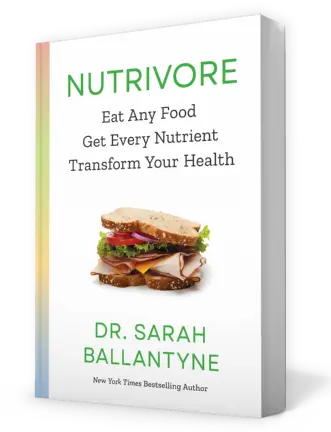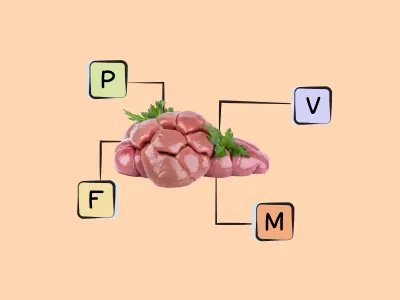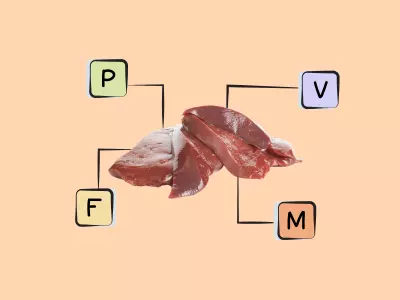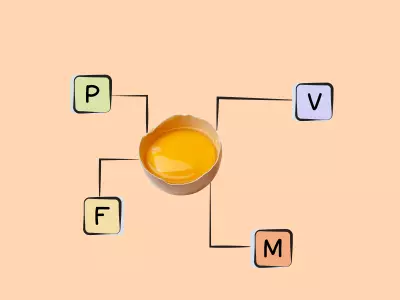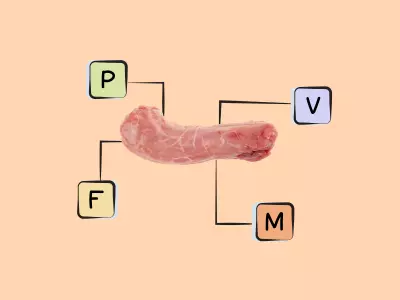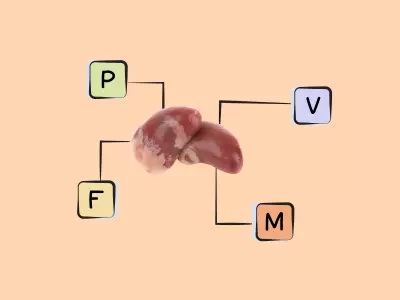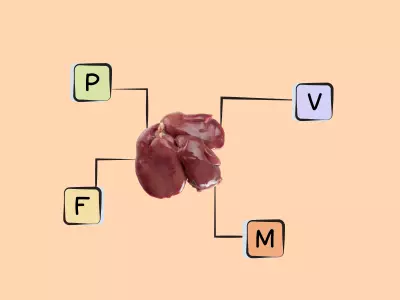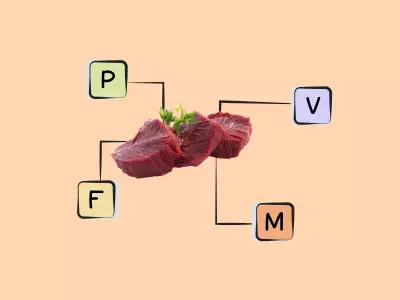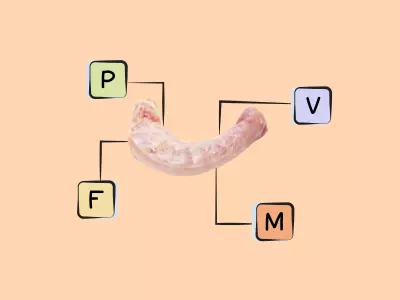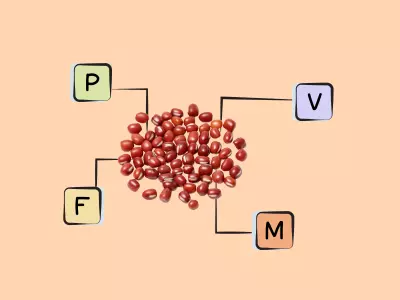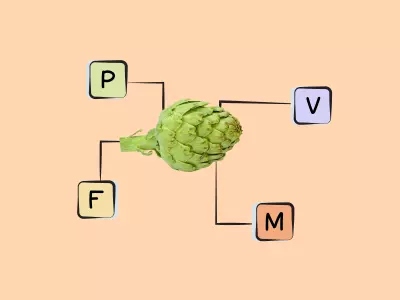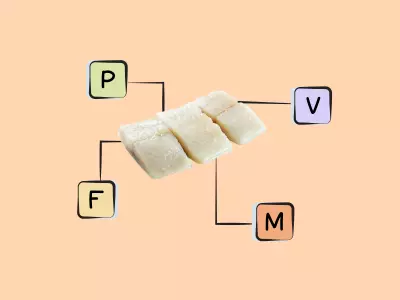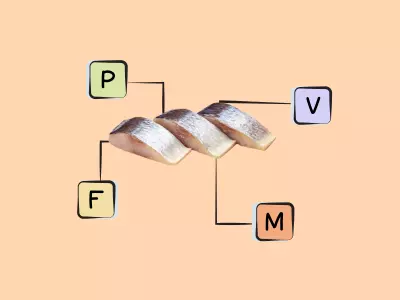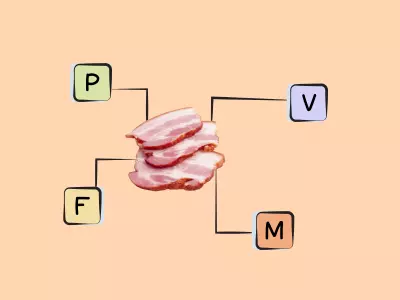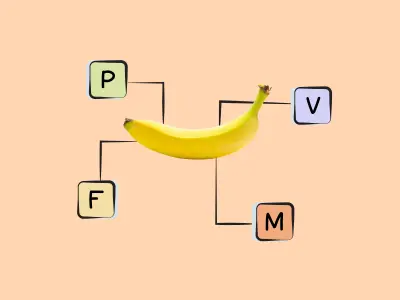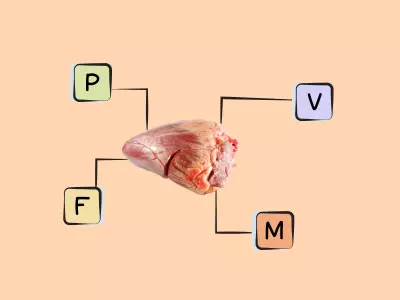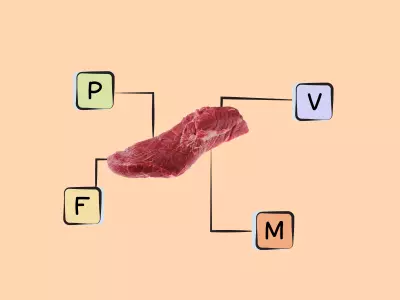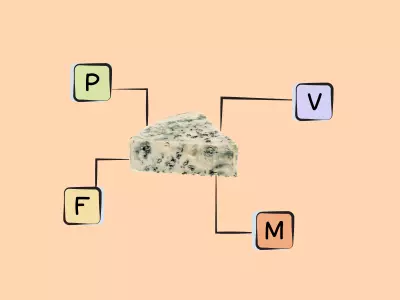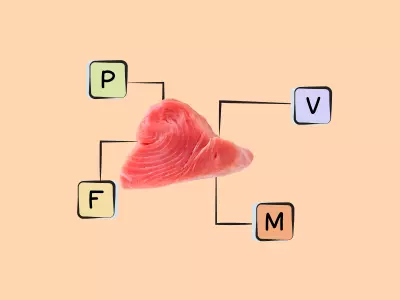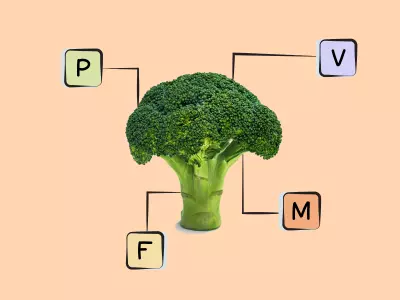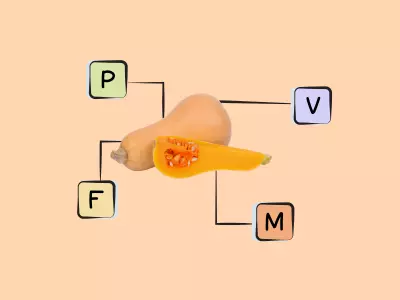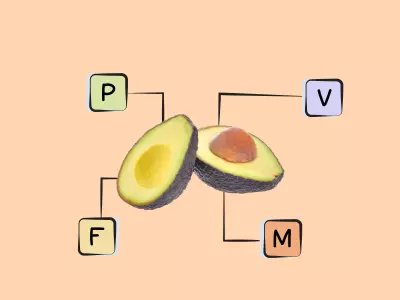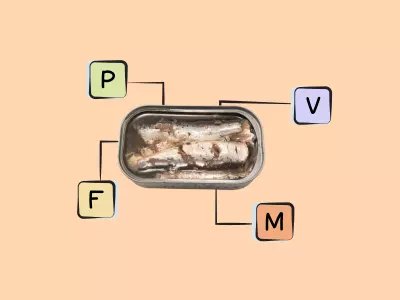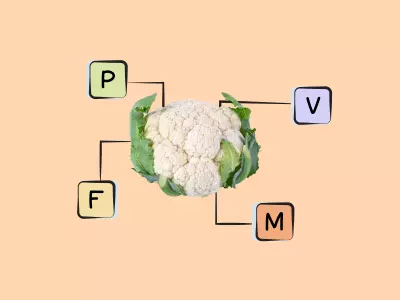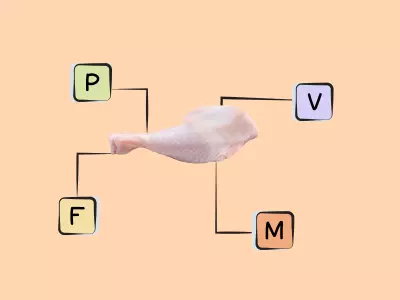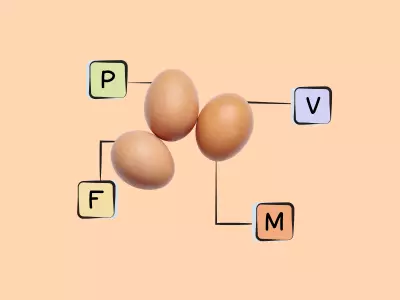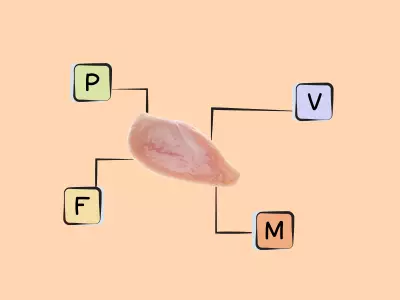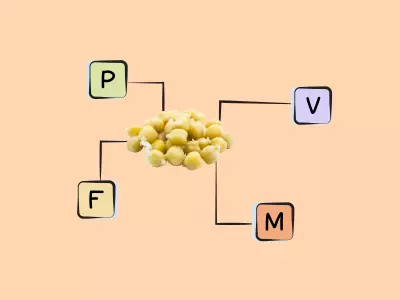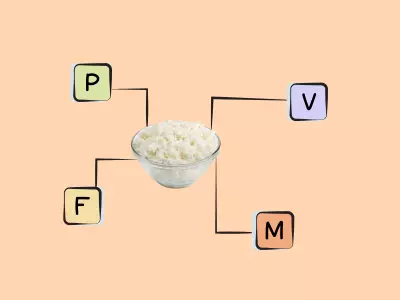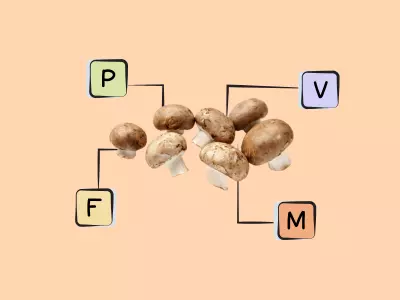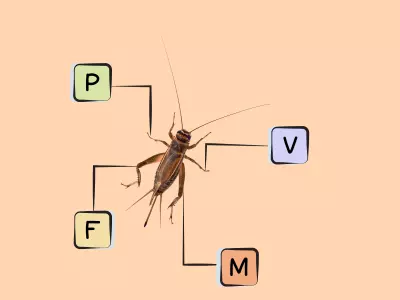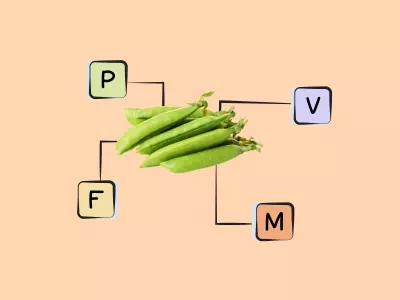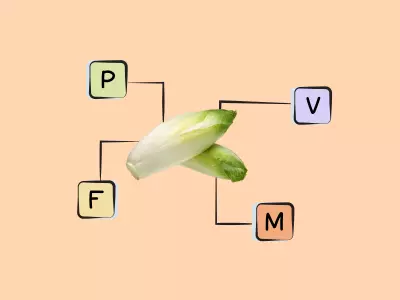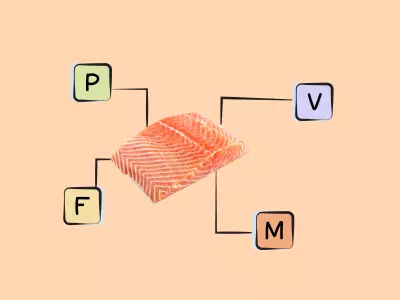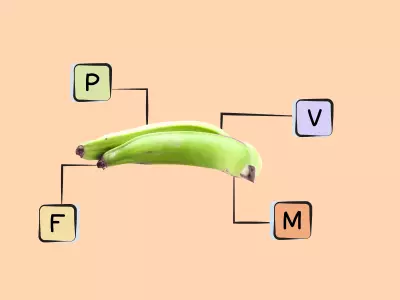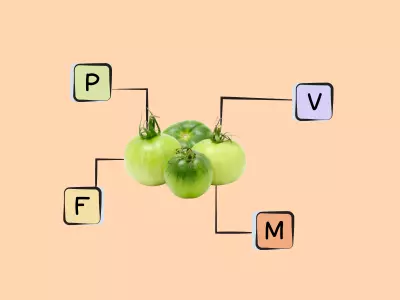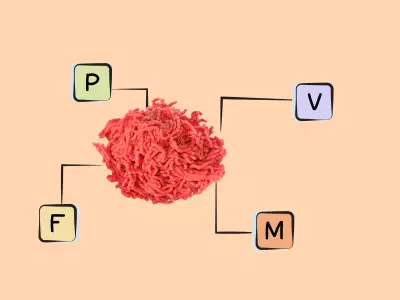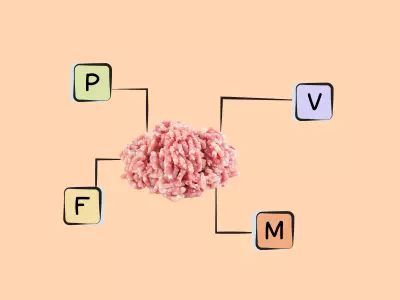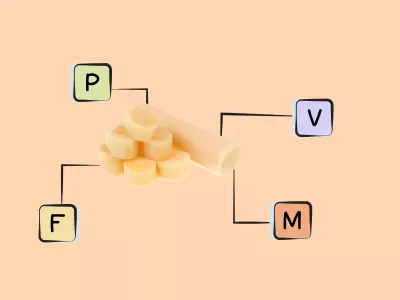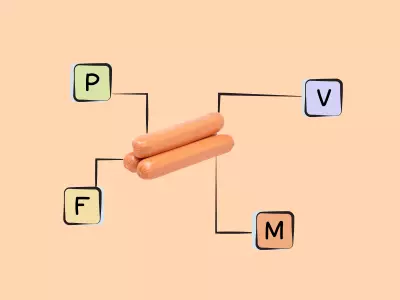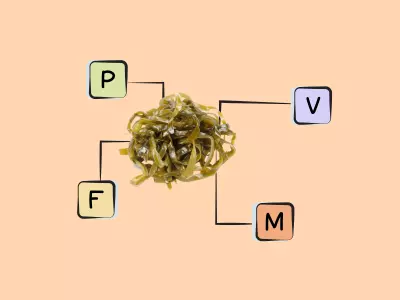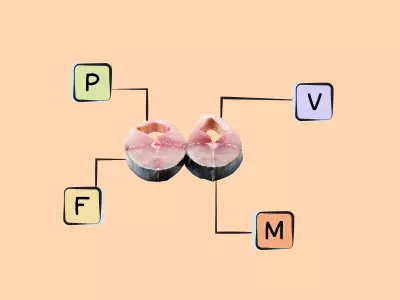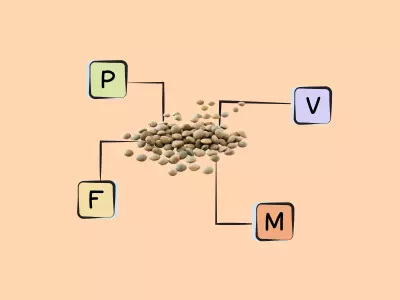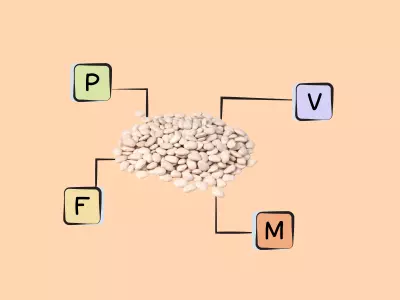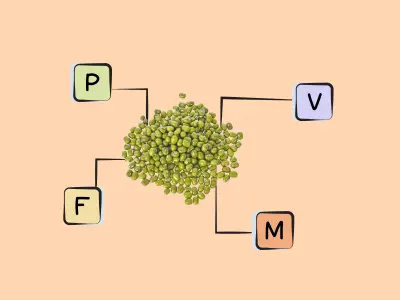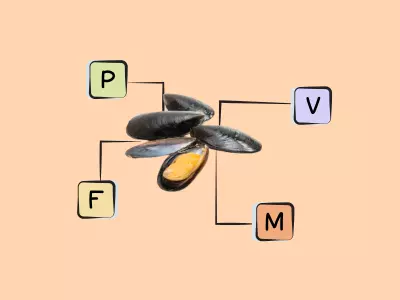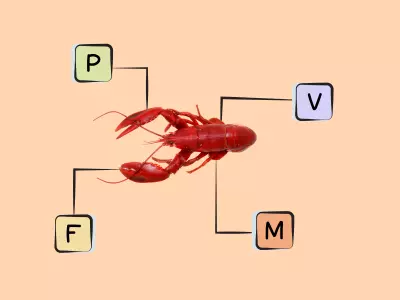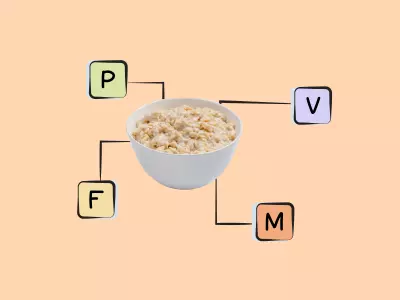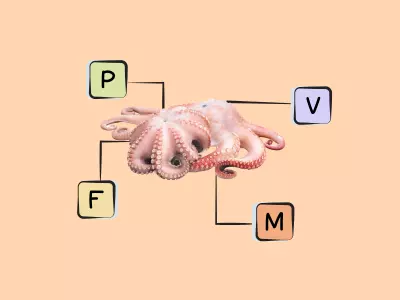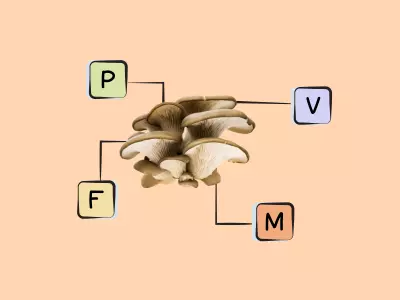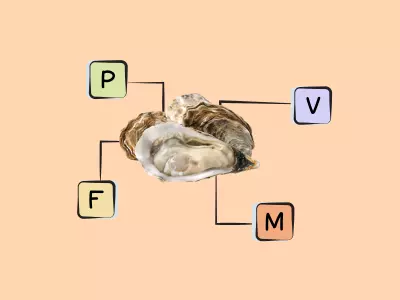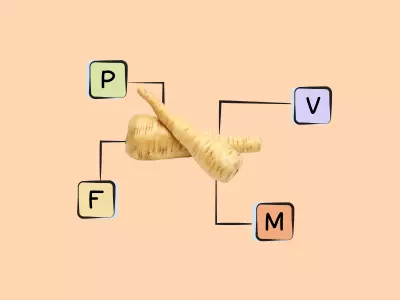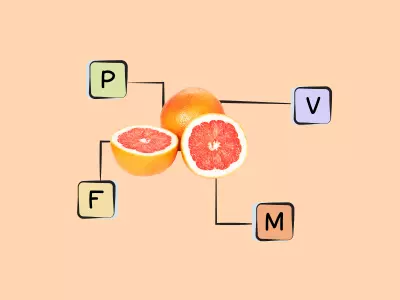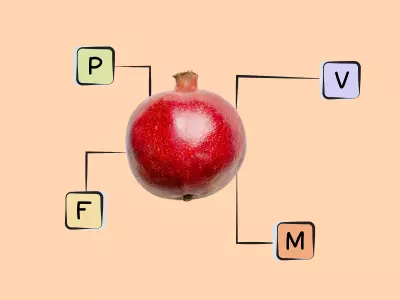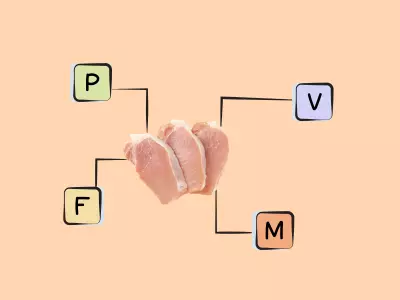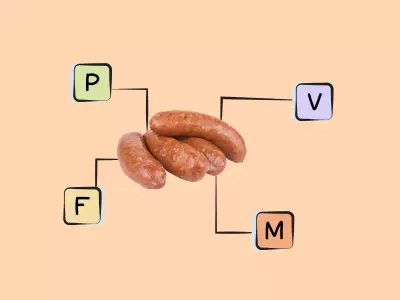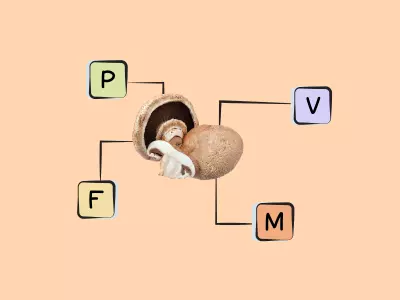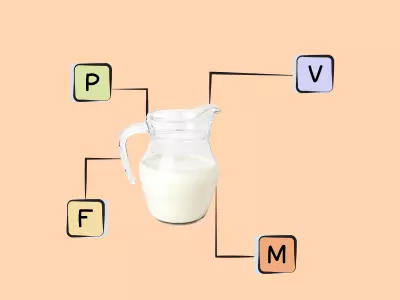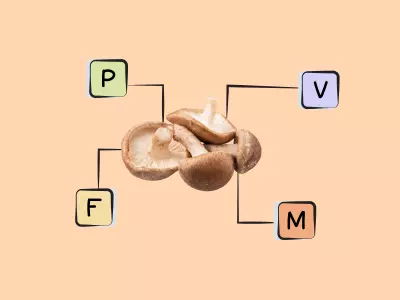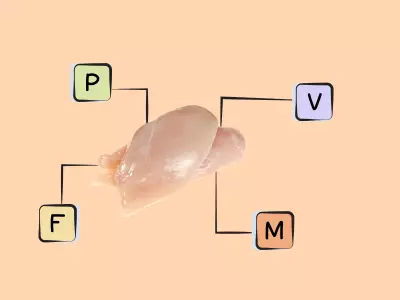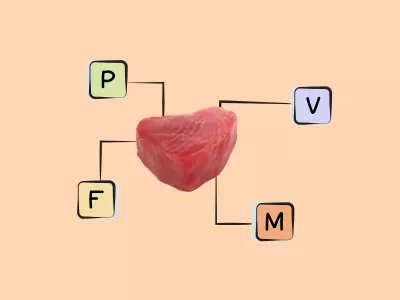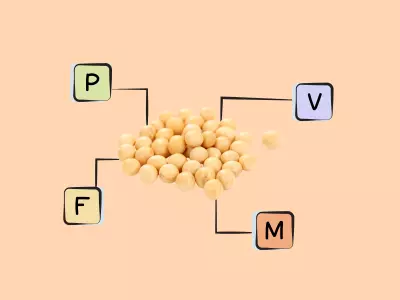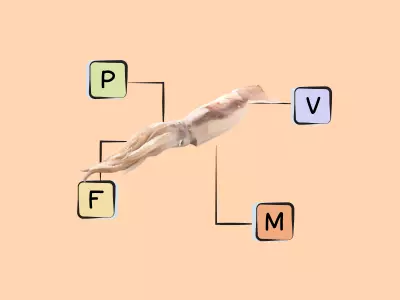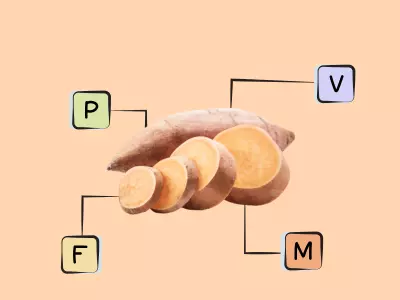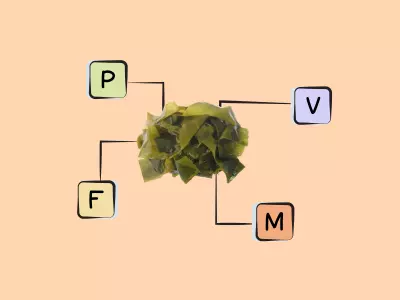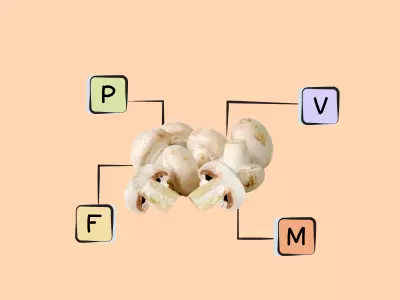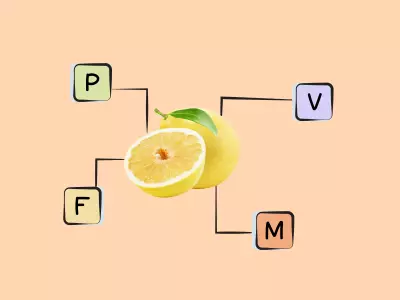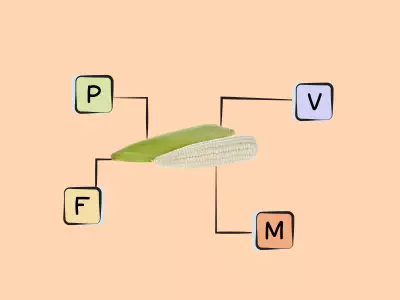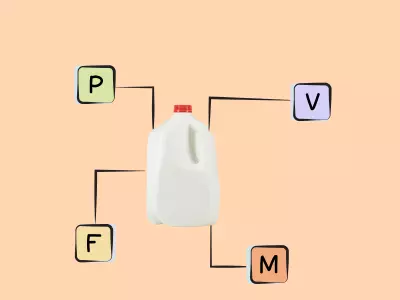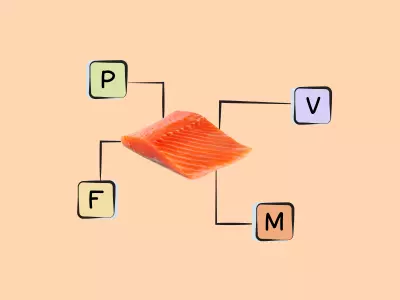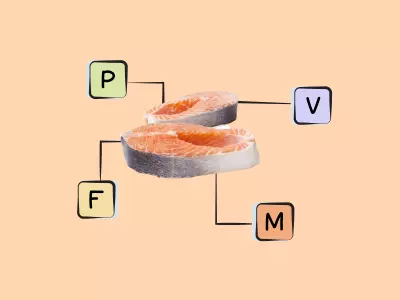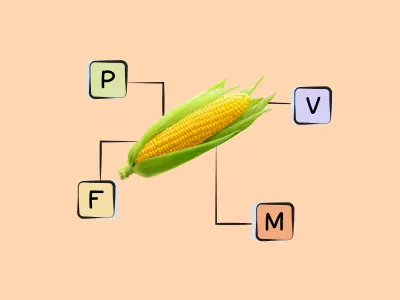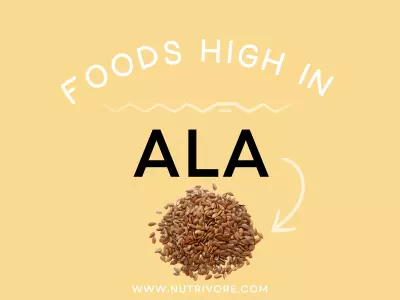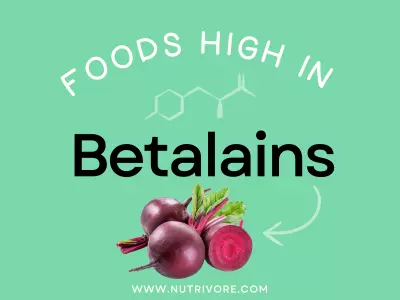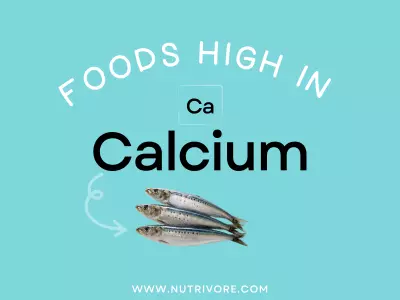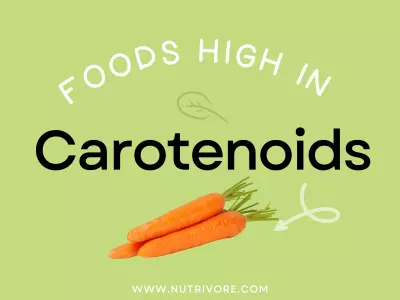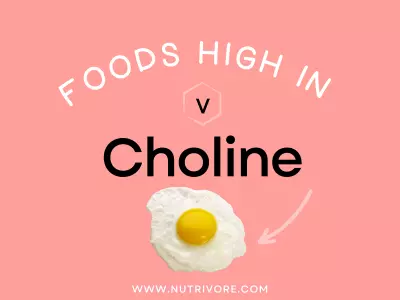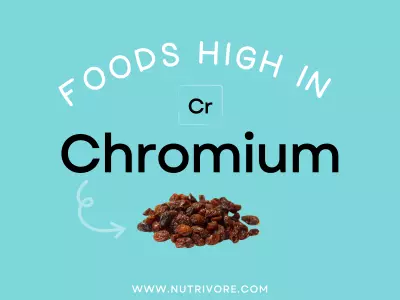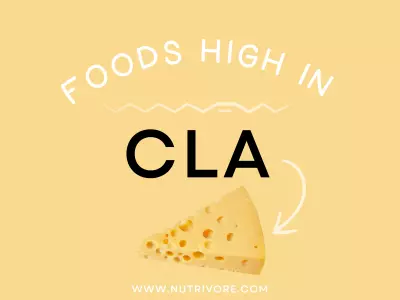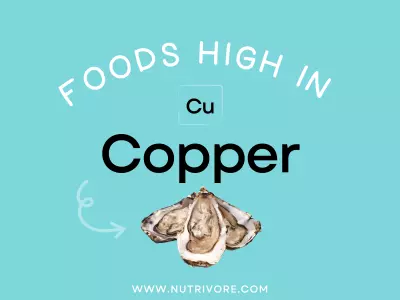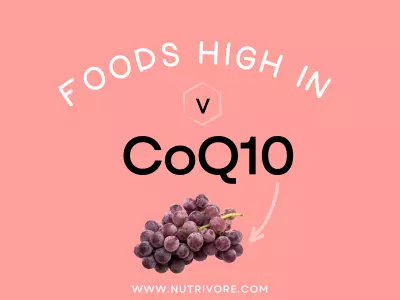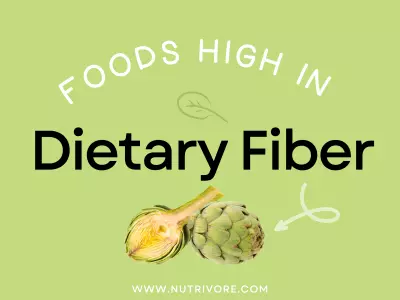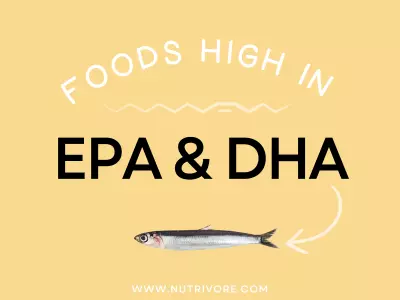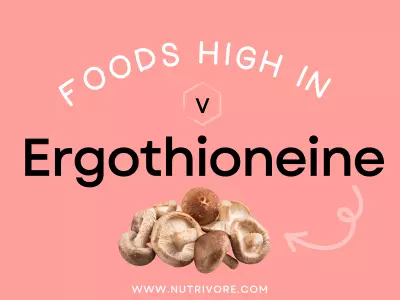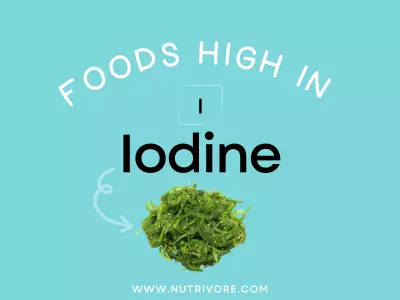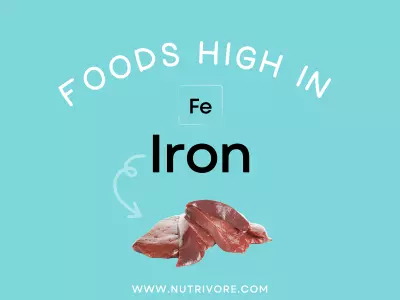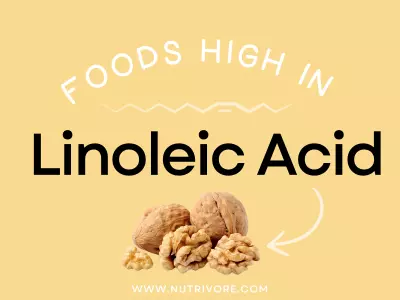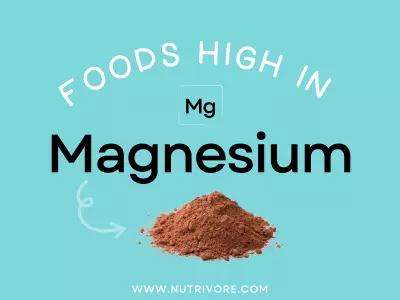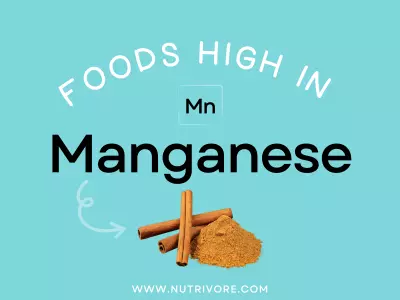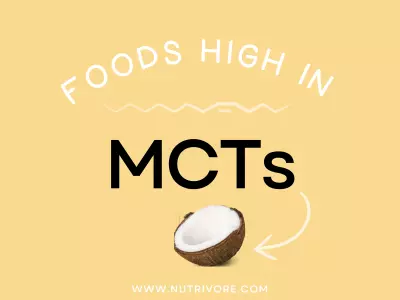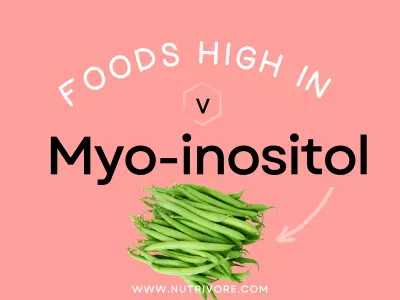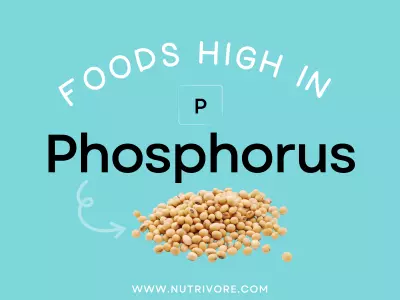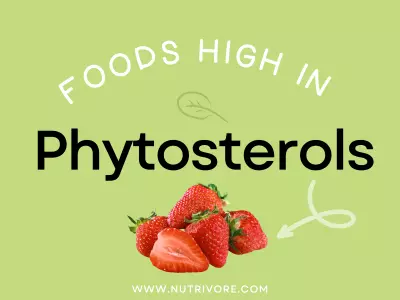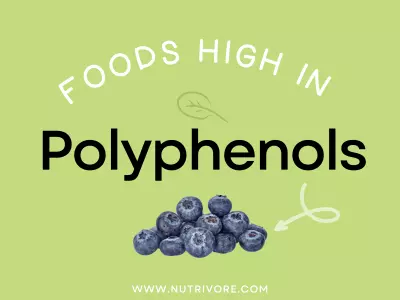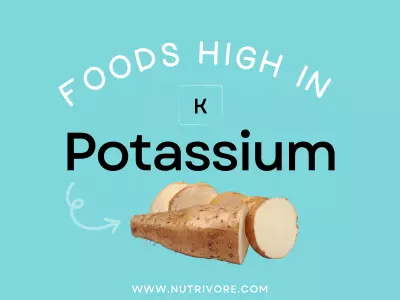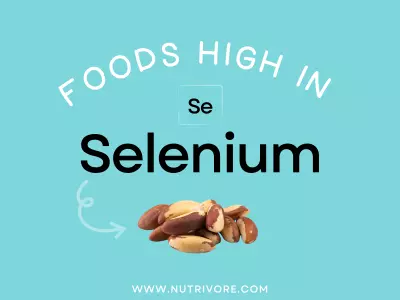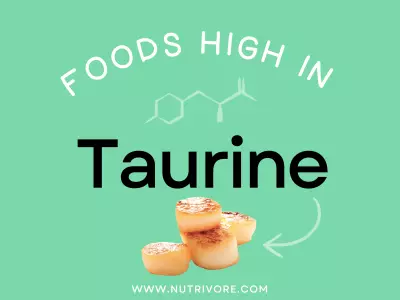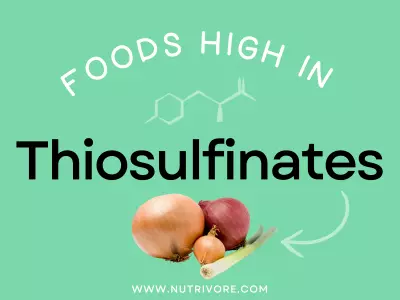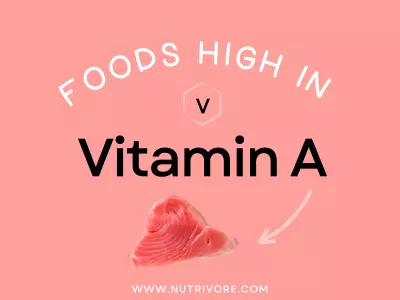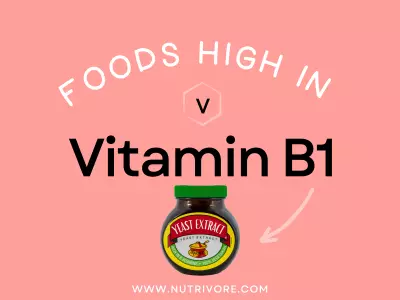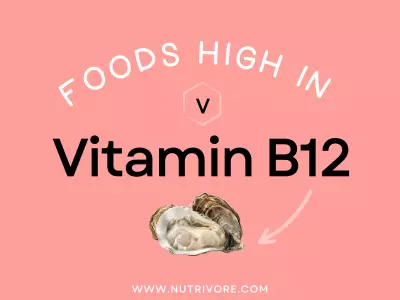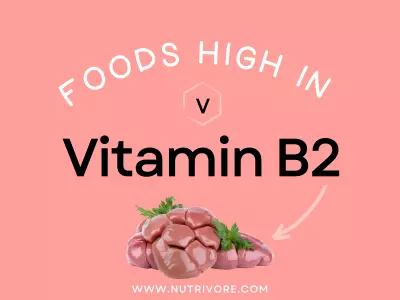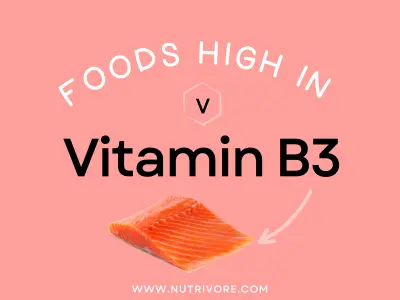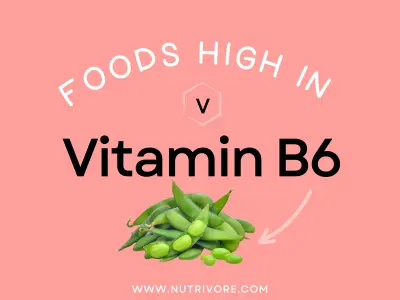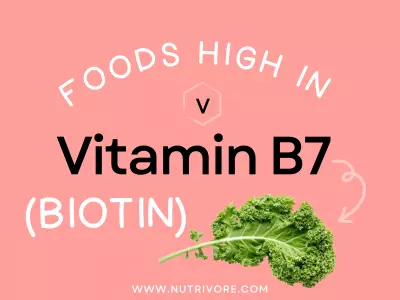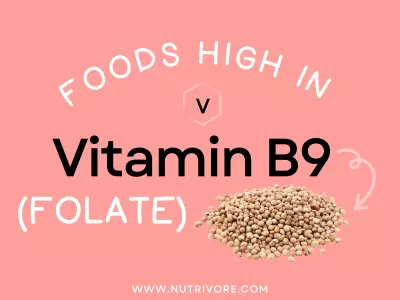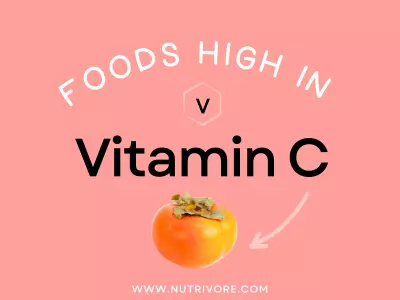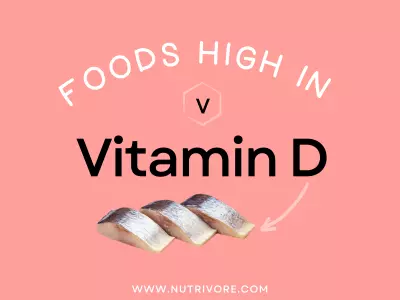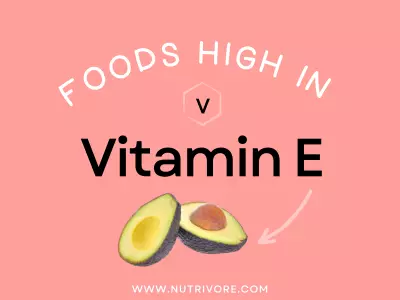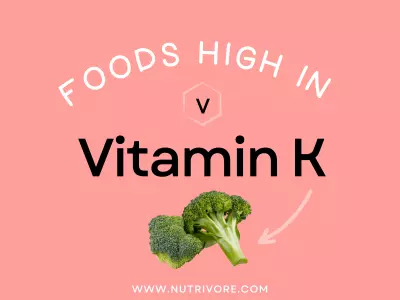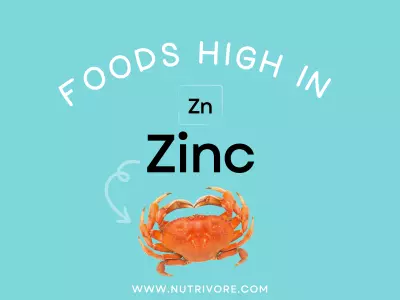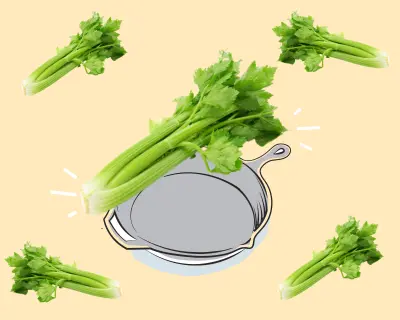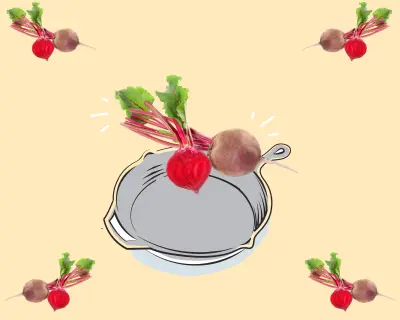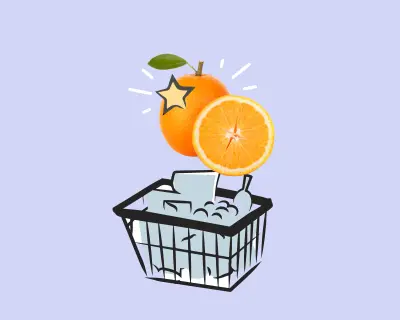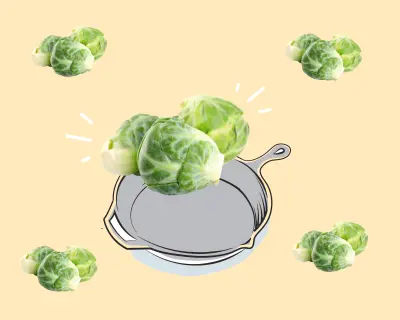Table of Contents[Hide][Show]
Top 5 Common Food Sources of Vitamin B5
Looking to get more vitamin B5 in your diet? Look no further! My team and I have crunched the numbers and did all the math to determine the top 5 common food sources of this vitamin, per serving. Overall, there’s few foods that provide half of the daily value of vitamin B5 per serving (and those that do are all organ meats), so for most of us that means we need to choose a variety of foods rich in vitamin B5 that deliver smaller amounts of the dietary reference intake per serving, and sprinkle those throughout the day. Getting enough vitamin B5 as part of a healthy balanced diet is important since a large collection of studies show that getting nutrients from dietary supplements or multivitamins doesn’t improve health outcomes compared to getting nutrients from foods!
| Rank | Food | Nutrivore Score | Serving Size (Raw) | Vitamin B5 (mg/serving) | % Daily Value |
|---|---|---|---|---|---|
| 1 | Liver, Average1 | 4192 | 3.5 oz / 100 g | 6.7 | 134 |
| 2 | Kidney, Average2 | 2558 | 3.5 oz / 100 g | 3.8 | 75 |
| 3 | Giblets, Average3 | 1319 | 3.5 oz / 100 g | 3.3 | 67 |
| 4 | Trout, Mixed Species | 710 | 4 oz / 115 g | 2.2 | 45 |
| 5 | Emu, Ostrich, Average4 | 551 | 3.5 oz / 100 g | 1.8 | 35 |
2Kidney, average includes beef, lamb, and pork kidney.
3Giblets, average includes chicken and turkey giblets.
4Emu/Ostrich, average includes all USDA raw emu and ostrich entries (including both meat and skin).
Want to know more about this essential nutrient including what vitamin B5 does in the body, how much vitamin B5 we need, what happens if we have low vitamin B5 levels or if we get too much, and even more awesome vitamin B5 rich foods? Keep reading to learn all there is to know!
Learn What Foods Are the Best Sources of Every Nutrient
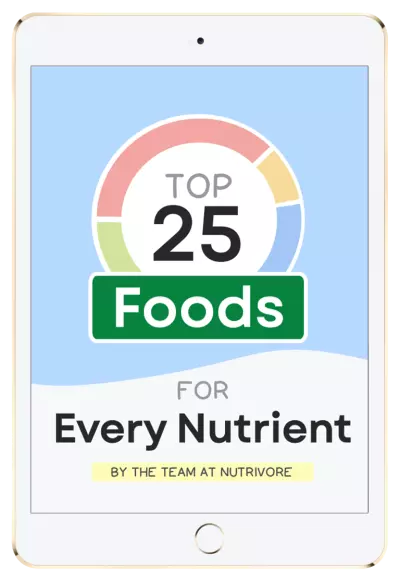
The Top 25 Foods for Every Nutrient
The Top 25 Foods for Every Nutrient e-book is a well-organized, easy-to-use, grocery store-friendly guide to help you choose foods that fit your needs of 43 important nutrients while creating a balanced nutrient-dense diet.
Get two “Top 25” food lists for each nutrient, plus you’ll find RDA charts for everyone, informative visuals, fun facts, serving sizes and the 58 foods that are Nutrient Super Stars!
Buy now for instant digital access.
What Is Vitamin B5 and What Does It Do?
Pantothenic acid, AKA vitamin B5, is a water-soluble B vitamin found in virtually every plant and animal food. Importantly, it serves as a precursor for coenzyme A, which is essential to numerous biological reactions in the body. These include metabolizing a variety of drugs and toxins, creating a bioactive lipid called sphingosine, and forming the derivatives acetyl-CoA and succinyl-CoA—which are then used for synthesizing cholesterol, fatty acids, steroid hormones, the neurotransmitter acetylcholine, vitamins A and D, melatonin, and heme (a component of hemoglobin). Via coenzyme A, pantothenic acid also participates in energy metabolism, allowing other molecules (such as pyruvate and for alpha-ketoglutarate) to enter the Krebs cycle and undergo transformation.
Research suggests that a pantothenic acid derivative called pantethine (which is structurally similar to coenzyme A) has statin-like properties, helping improve blood lipid profiles and reducing other cardiovascular risk factors like cholesterol oxidation, intimal thickening, fatty streak formation, and lipid deposition within the arteries. This nutrient has also been shown to boost cellular production of the antioxidant glutathione, reduce inflammation, and potentially improve symptoms of rheumatoid arthritis. It can even help accelerate wound healing by increasing the migration of cells into injured tissue, as well as by increasing fibroblast content within the wound site.
Learn more about vitamin B5 here.
Vitamin B5 Deficiency
Due to its widespread presence in foods, daily dietary intake of vitamin B5 is adequate for nearly everyone, and deficiency in humans is rare—only occurring during severe malnutrition.
Symptoms of Deficiency
Most knowledge about vitamin B5 (pantothenic acid) deficiency comes from animal studies. In rats, it damages adrenal glands; in dogs, it causes low blood sugar, convulsions, rapid breathing, and increased heart rate; in monkeys, it leads to anemia; in chickens, it results in skin irritation, nerve damage, and feather issues; and in mice, it lowers exercise tolerance, reduces glycogen storage, and causes graying fur. In rare human studies, deficiency symptoms included numbness, burning feet, fatigue, insomnia, headaches, and digestive issues.
Learn more here.
Problems From Too Much Vitamin B5
Pantothenic acid (vitamin B5) has no established tolerable upper intake level (UL) due to a lack of reported toxicity in humans, even at high doses. However, taking large supplements (10-20 g/day) has led to reports of some side effects including mild diarrhea and gastrointestinal discomfort, which is why consulting a healthcare provider for medical advice before taking pantothenic acid supplements is recommended.
How Much Vitamin B5 Do We Need?
The following table summarizes the current recommended amounts of vitamin B5, based on age, gender, or life stage (requirements increase during pregnancy and when breastfeeding).
It’s also important to note that vitamin B5 has some known interactions with other nutrients including vitamin B7 (biotin). Learn more here.
| 0 – 6 months | |||||
| 6 months to < 12 months | |||||
| 1 yr – 3 yrs | |||||
| 4 yrs – 8 yrs | |||||
| 9 yrs – 13 yrs | |||||
| 14 yrs – 18 yrs | |||||
| 19 yrs – 50 yrs | |||||
| 51+ yrs | |||||
| Pregnant (14 – 18 yrs) | |||||
| Pregnant (19 – 30 yrs) | |||||
| Pregnant (31 – 50 yrs) | |||||
| Lactating (14 – 18 yrs) | |||||
| Lactating (19 – 30 yrs) | |||||
| Lactating (31 – 50 yrs) |
Nutrient Daily Values
Nutrition requirements and recommended nutrient intake for infants, children, adolescents, adults, mature adults, and pregnant and lactating individuals.
More Food Sources of Vitamin B5
Vitamin B5 is found in small amounts in many foods, with the richest sources being organ meats (like liver and kidneys), red meat, shellfish, oily fish, dairy products, eggs, legumes (such as lentils), mushrooms, avocados, seeds (especially sunflower seeds and flaxseeds), whole grains, and sweet potatoes. Additionally, some processed foods, including breakfast cereals, are fortified with pantothenic acid. Interestingly, gut bacteria can synthesize pantothenic acid, though its overall contribution to the body’s supply remains uncertain.
Best Food Sources of Vitamin B5
The following foods have high concentrations of vitamin B5, containing at least 50% of the recommended dietary allowance per serving, making them our best food sources of this valuable B-vitamin!
Good Food Sources of Vitamin B5
The following foods are excellent or good sources of this b-complex vitamin, containing at least 10% (and up to 50%) of the daily value per serving. Including a wide variety of these foods throughout the day will help ensure you’re meeting your B5 targets! With so many options to choose from, covering a variety of different food groups, there’s bound to something you enjoy.
Top 5 Common Food Sources
If you’re looking for top 5 common food sources of other important nutrients check out these posts!
cITATIONS
Expand to see all scientific references for this article.
Beld J, Sonnenschein EC, Vickery CR, Noel JP, Burkart MD. The phosphopantetheinyl transferases: catalysis of a post-translational modification crucial for life. Nat Prod Rep. 2014 Jan;31(1):61-108. doi: 10.1039/c3np70054b.
Bender DA. Optimum nutrition: thiamin, biotin and pantothenate. Proc Nutr Soc. 1999 May;58(2):427-33. doi: 10.1017/s0029665199000567.
Donato H, Krupenko NI, Tsybovsky Y, Krupenko SA. 10-formyltetrahydrofolate dehydrogenase requires a 4′-phosphopantetheine prosthetic group for catalysis. J Biol Chem. 2007 Nov 23;282(47):34159-66. doi: 10.1074/jbc.M707627200.
Evans M, Rumberger JA, Azumano I, Napolitano JJ, Citrolo D, Kamiya T. Pantethine, a derivative of vitamin B5, favorably alters total, LDL and non-HDL cholesterol in low to moderate cardiovascular risk subjects eligible for statin therapy: a triple-blinded placebo and diet-controlled investigation. Vasc Health Risk Manag. 2014 Feb 27;10:89-100. doi: 10.2147/VHRM.S57116. PMID: 24600231; PMCID: PMC3942300.
Fry PC, Fox HM, Tao HG. Metabolic response to a pantothenic acid deficient diet in humans. J Nutr Sci Vitaminol (Tokyo). 1976;22(4):339-46. doi: 10.3177/jnsv.22.339.
Gaddi A, Descovich GC, Noseda G, Fragiacomo C, Colombo L, Craveri A, Montanari G, Sirtori CR. Controlled evaluation of pantethine, a natural hypolipidemic compound, in patients with different forms of hyperlipoproteinemia. Atherosclerosis. 1984 Jan;50(1):73-83. doi: 10.1016/0021-9150(84)90009-1.
Heise R, Skazik C, Marquardt Y, Czaja K, Sebastian K, Kurschat P, Gan L, Denecke B, Ekanayake-Bohlig S, Wilhelm KP, Merk HF, Baron JM. Dexpanthenol modulates gene expression in skin wound healing in vivo. Skin Pharmacol Physiol. 2012;25(5):241-8. doi: 10.1159/000341144.
Institute of Medicine (US) Standing Committee on the Scientific Evaluation of Dietary Reference Intakes and its Panel on Folate, Other B Vitamins, and Choline. Dietary Reference Intakes for Thiamin, Riboflavin, Niacin, Vitamin B6, Folate, Vitamin B12, Pantothenic Acid, Biotin, and Choline. Food and Nutrition Board. Washington (DC): National Academies Press (US); 1998.
Kobayashi D, Kusama M, Onda M, Nakahata N. The effect of pantothenic acid deficiency on keratinocyte proliferation and the synthesis of keratinocyte growth factor and collagen in fibroblasts. J Pharmacol Sci. 2011;115(2):230-4. doi: 10.1254/jphs.10224sc.
Kurian MA, Hayflick SJ. Pantothenate kinase-associated neurodegeneration (PKAN) and PLA2G6-associated neurodegeneration (PLAN): review of two major neurodegeneration with brain iron accumulation (NBIA) phenotypes. Int Rev Neurobiol. 2013;110:49-71. doi: 10.1016/B978-0-12-410502-7.00003-X.
Martinez DL, Tsuchiya Y, Gout I. Coenzyme A biosynthetic machinery in mammalian cells. Biochem Soc Trans. 2014 Aug;42(4):1112-7. doi: 10.1042/BST20140124.
Moriya A, Fukuwatari T, Sano M, Shibata K. Different variations of tissue B-group vitamin concentrations in short- and long-term starved rats. Br J Nutr. 2012 Jan;107(1):52-60. doi: 10.1017/S0007114511002339.
Rumberger JA, Napolitano J, Azumano I, Kamiya T, Evans M. Pantethine, a derivative of vitamin B(5) used as a nutritional supplement, favorably alters low-density lipoprotein cholesterol metabolism in low- to moderate-cardiovascular risk North American subjects: a triple-blinded placebo and diet-controlled investigation. Nutr Res. 2011 Aug;31(8):608-15. doi: 10.1016/j.nutres.2011.08.001.
Said HM, Ortiz A, McCloud E, Dyer D, Moyer MP, Rubin S. Biotin uptake by human colonic epithelial NCM460 cells: a carrier-mediated process shared with pantothenic acid. Am J Physiol. 1998 Nov;275(5):C1365-71. doi: 10.1152/ajpcell.1998.275.5.C1365.
Said HM. Intestinal absorption of water-soluble vitamins in health and disease. Biochem J. 2011 Aug 1;437(3):357-72. doi: 10.1042/BJ20110326.
Slyshenkov VS, Dymkowska D, Wojtczak L. Pantothenic acid and pantothenol increase biosynthesis of glutathione by boosting cell energetics. FEBS Lett. 2004 Jul 2;569(1-3):169-72. doi: 10.1016/j.febslet.2004.05.044.
Strickland KC, Krupenko NI, Dubard ME, Hu CJ, Tsybovsky Y, Krupenko SA. Enzymatic properties of ALDH1L2, a mitochondrial 10-formyltetrahydrofolate dehydrogenase. Chem Biol Interact. 2011 May 30;191(1-3):129-36. doi: 10.1016/j.cbi.2011.01.008.
Tardy AL, Pouteau E, Marquez D, Yilmaz C, Scholey A. Vitamins and Minerals for Energy, Fatigue and Cognition: A Narrative Review of the Biochemical and Clinical Evidence. Nutrients. 2020 Jan 16;12(1):228. doi: 10.3390/nu12010228.
Tsuboyama-Kasaoka N, Takizawa A, Tsubota-Utsugi M, Nakade M, Imai E, Kondo A, Yoshida K, Okuda N, Nishi N, Takimoto H. Dietary intake of nutrients with adequate intake values in the dietary reference intakes for Japanese. J Nutr Sci Vitaminol (Tokyo). 2013;59(6):584-95. doi: 10.3177/jnsv.59.584.
Vaxman F, Olender S, Lambert A, Nisand G, Aprahamian M, Bruch JF, Didier E, Volkmar P, Grenier JF. Effect of pantothenic acid and ascorbic acid supplementation on human skin wound healing process. A double-blind, prospective and randomized trial. Eur Surg Res. 1995;27(3):158-66. doi: 10.1159/000129395. PMID:
Vaxman F, Olender S, Lambert A, Nisand G, Grenier JF. Can the wound healing process be improved by vitamin supplementation? Experimental study on humans. Eur Surg Res. 1996 Jul-Aug;28(4):306-14. doi: 10.1159/000129471.
Weimann BI, Hermann D. Studies on wound healing: effects of calcium D-pantothenate on the migration, proliferation and protein synthesis of human dermal fibroblasts in culture. Int J Vitam Nutr Res. 1999 Mar;69(2):113-9. doi: 10.1024/0300-9831.69.2.113.
Wiederholt T, Heise R, Skazik C, Marquardt Y, Joussen S, Erdmann K, Schröder H, Merk HF, Baron JM. Calcium pantothenate modulates gene expression in proliferating human dermal fibroblasts. Exp Dermatol. 2009 Nov;18(11):969-78. doi: 10.1111/j.1600-0625.2009.00884.x.


